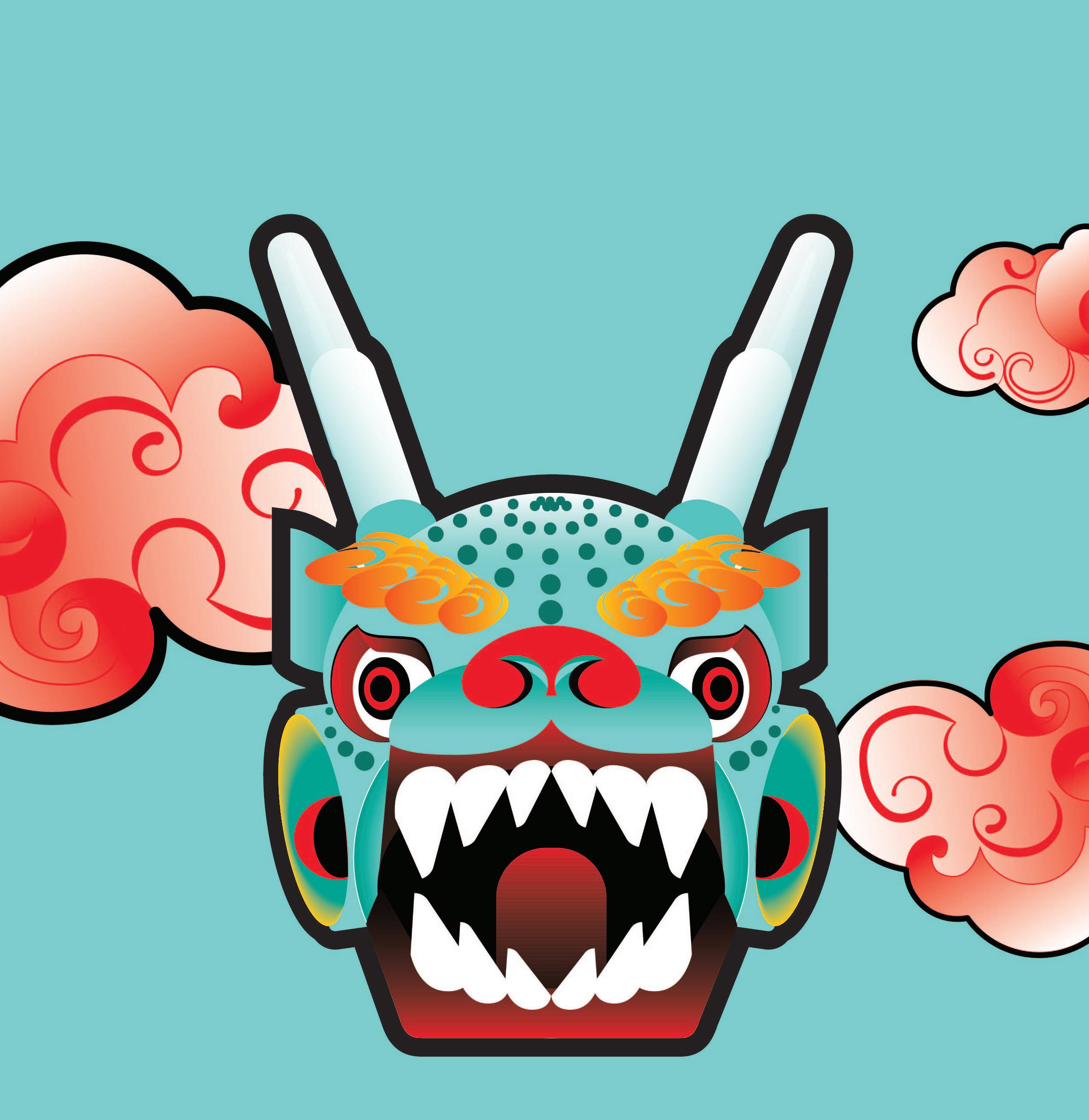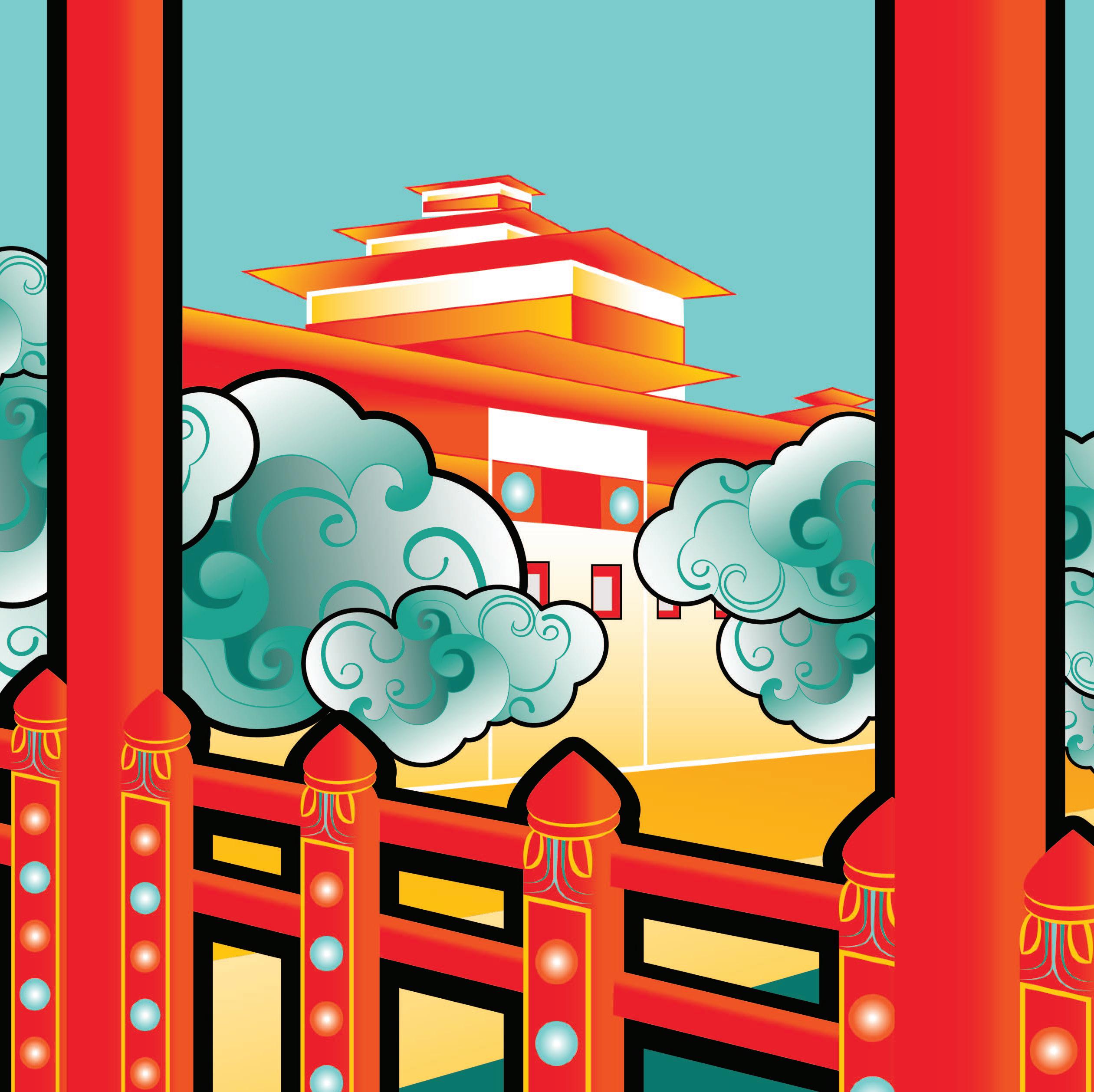BHUTAN
PRESERVATION OF HAPPINESS
 Illustrated by Adi Patton
Illustrated by Adi Patton

 Illustrated by Adi Patton
Illustrated by Adi Patton
BHUTAN - Preservation of Happiness a book is set in HALCOM, designed and illustrated by Adi Patton within Adobe Illustrator and InDesign in Feburary 2023. This book is to show representation of the country of Bhutan, located in the Himalayas between India and China. This is copy number one of one.
6
Where the Giants Roam
4 A Living Time Capsule
8 Soup of Tradition
10 Drumming through the Centuries


The land of Bhutan, untouched by time and preserved in a state of unchanged beauty, provides the world with a living time capsule of the county along with its diverse and complex culture. Having been landlocked and situated in the Eastern Himalayas, it is protected from outside influences and technology from the Western world. Technology as we know today was not introduced in Bhutan until 1990’s. This has allowed for Bhutan to maintain its culture from the time it was founded in 747 A.D. when its religious and cultural traditions began their practice. Everything from the clothes, the food, the religious practices, and the people allows for tourists and others alike to step back in time to experience the raw and authentic history of Bhutan. With being untouched for centuries, Bhutan is one of the few countries in the world who has not conquered or influenced by other methods of living. It’s one of only two carbon negative countries in the world as well as having nearly all its natural land and mountains from where it was formed.
The conservation of the environment is so important to the Bhutan that it is one of the four pillars of Bhutan’s Gross National Happiness philosophy. The Bhutan’s Gross National Happiness (GNH) philosophy consists of four pillars which address good governance, sustainable socioeconomic development, cultural preservation, and environmental conservation within the country. The four pillars are further elaborated into nine domains: psychological wellbeing; living standard, health, culture, education, community vitality, good governance, and balanced time use and ecological integration. The people of Bhutan not only address the happiness of its people but the happiness of the nature and live that co-exist within the county’s bounders. Much time and care from previous generations of Bhutan had made it where the culture has from thrived and stayed alive within the 21st century and will continue to do so for centuries to come.




The takin is believed to be related to various species such as goats, sheep, cows, muskox, and moose. It belongs within the mammalian family Bovidae that also includes antelopes, oxen, sheep and goats, among others. The bovids include some of the most familiar animals on earth such as cattle. It’s found in the eastern Himalayas covering Bhutan and parts of northeastern India and southwestern China. Primarily in Bhutan, takins are in the large Jigme Dorji National Park, where it prefers high-altitude, forested valleys and, in winter, grassy alpine slopes.

The best place for visitors to see it is the Motithang Takin Preserve, in the hills on the outskirts of the capital, Thimphu. The story that resulted in the reserve was that some takins were kept in cages in a mini zoo in Thimpu, but the then Bhutanese king thought it improper for a Buddhist country to confine animals and ordered their release. However, the animals stayed in the surrounding area and roamed around the streets of Thimphu looking for food. The authorities then decided to keep them in the enclosed, forested habitat of Mothithang Takin Preserve.
In Bhutan, followers of Mahayana Buddhism believe in a cycle of rebirth. At monasteries around the country, you can find a large circular fresco of the Wheel of Life, showing six areas of rebirth; one being the takin. More colourful is the story of how the takin came into existence. According to legend, a Buddhist monk known as the Divine Madman – his name was Drukpa Kunley – was asked to perform a miracle. He requested a cow and a goat for lunch, and after eating them both, he created a animal from the goat’s head and the cow’s skeletonthe takin.




Ema Datshi is a signature dish that is present all over Bhutan, appearing within homes, restaurants, rituals and festivals as well as every meal. Ema Datshi translates chili cheese from the Dzongkha language. The dish is a combination of chili peppers, spices, and the nation’s delicacy, yak cheese. Chilis are not indigenous to Bhutan, but they have become an integral part of Bhutanese cuisine. It is tradition for the Bhutanese to introduce spice and chilies to their children since it is believed to increase both appetite, keep oneself stay warm, and in increments to condition them for a lifetime of chili consumption.

• 3-5 pieces of Bhutanese green chili, cut horizontally


• 3 cloves of garlic, preferably chopped
• 1 onion, sliced (use spring onions if you’re cooking with dried red chili)
• 2 tablespoons oil or butter
• 1 2-ounce ball homemade cottage yak cheese (cheese with light mold gives better flavor)
• Salt to taste
• Wash the chili pieces and cut them into smaller horizontal pieces.
• Set a pan on the stove and fill it with ½ cup of water. Now throw chili, chopped garlic, sliced onion, salt, and butter in the pan. Sprinkle a ball of cottage cheese on top.
• Cover the pot and boil it on low flame for about 10 minutes. Stir and serve with red rice.
“Chilies and cheese are their favorite! Chilies used in the ema datshi are really spicy and this dish is served over a bed of red rice, another staple food of the Bhutanese.”
- Nisha Ramesh

Dramétsé Ngacham translates to ‘mask dance of the drums from Drametse’, nga meaning ‘drum’ and cham meaning ‘mask dance’ within the Dzongkha language. It is a sacred dance performed twice a year during the Dramétsé festival in the village of Dramétsé in eastern Bhutan. The festival is to honor Padmasambhava, an 8th-century Buddhist master. By watching this celestial dance, people gain merit towards liberation or avoiding rebirth in the lower realms. The dance itself is known for restoring peace, tranquility, prosperity, good fortune, liberation to the community and to the whole country. It was traditionally performed by lay priests with religious competency, but due to the declining number of them and introduction of schools for performing arts, ordinary men tend perform the Dramétsé Ngacham without necessarily understanding its significance.

A Buddhist named Künga Gyaltshen had a spiritual vision which led to the creation of the Dramétsé Ngacham. In it, he visited Guru Rinpoche’s Coppercoloured Palace where he witnessed a drum dance performed by celestial spiritual beings. After waking, he vividly remembered the external costumes, choreography, and movements as well as the internal process of visualization that accompanied them and wrote down the details of the performance and enacted the dance in Dramétsé, thus giving it the name, Drum Dance of Dramétsé. Since then, it was performed at Dramétsé as a dance of immense religious significance.
It included sixteen dancers, all wearing various animal head masks and dressed in silk costumes, each hold a drum as perform the dance, which lasts between two to three hours The number of dancers varies from place to place
but the original dance in Dramétsé is performed by sixteen dancers. The masks represent the non-human tantric divinities as Künga Gyeltsen visualized them in the Copper-coloured Palace. Most of them, like the lead snow lion, are found in the lists of divinities in the tantric teachings, such as those dealing with the hundred kinds of peaceful and wrathful deities and the bardo intermediate state. They overlap with the four door guardians, eight thramen deities, and the twenty-eight powerful divinities which are listed among fiftyeight wrathful deities.
They represent the different forms of enlightened energy that are both latent in a person and are manifest during spiritual and existential visions such as those during the bardo state and disrupting their prejudice towards seeing enlightened beings only in the form of human or celestial figures.


Bhutan, the land of the thundering dragon, stands landlocked in the Eastern Himalayas, forever untouched by outside influences and technology. The diverse and vibrant culture has laid untouched since the creation of traditions in 747 A.D. The land of the country has been nearly unaffected for centuries allowing for the people and heritage of Bhutan to flourish and thrive. The land takes the act of preserving their land and culture to the point of creating a Gross National Happiness which takes amount of the happiness and health of people, wildlife, and natural landscape.
U.S. $19.99 Can. $27.99
U.K. £12.99
